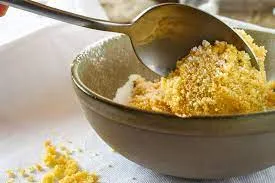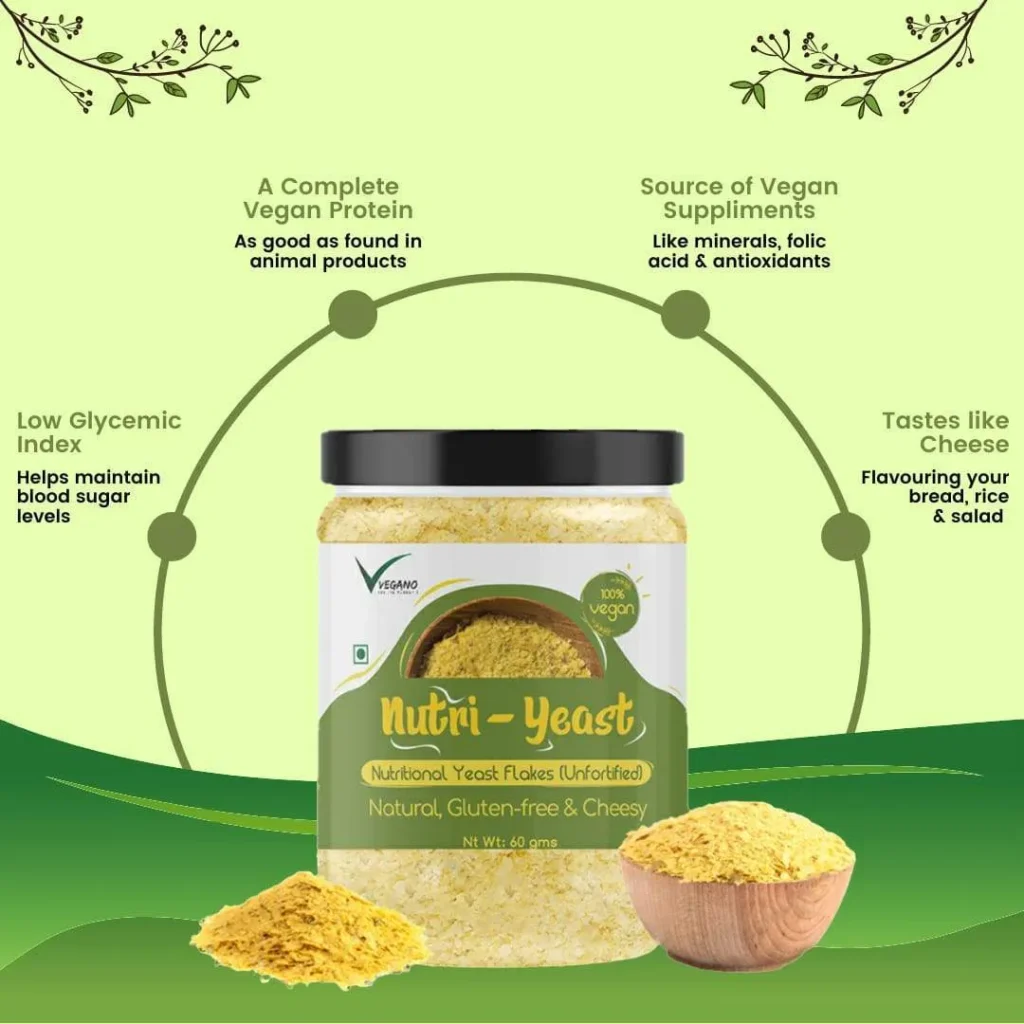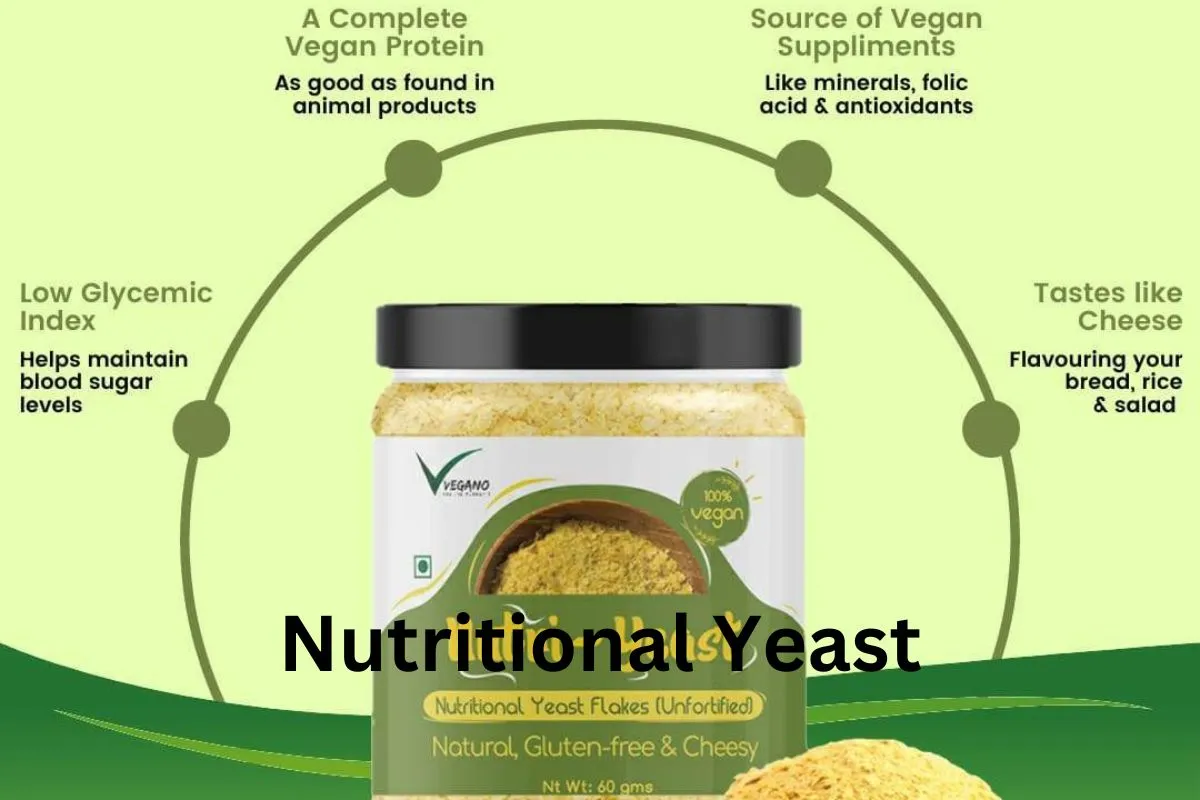Table of Contents
ToggleUnveiling the Marvel of Nutritional Yeast: Elevating Plant-Based Delights

In the dynamic realm of dietary choices, nutritional yeast has emerged as a culinary powerhouse, capturing the hearts of enthusiasts embracing vegan and vegetarian lifestyles. This deactivated yeast, scientifically labeled Saccharomyces cerevisiae, not only enchants culinary aficionados but has also cemented its place as a kitchen essential in plant-based households globally. Join us on a journey into the fascinating world of nutritional yeast, where we’ll uncover the intricacies of its production, delve into its nutritional benefits, and explore potential considerations.
Crafting Nutritional Yeast:
- Cultivation Magic: The saga of nutritional yeast begins with the cultivation of Saccharomyces cerevisiae on a molasses foundation. This unique medium nourishes the yeast with essential nutrients, setting the stage for its remarkable transformation.
- Harvesting Elegance: Matured to perfection, the yeast undergoes a meticulous harvesting process. This involves a delicate separation from the molasses, ensuring a pure and pristine final product.
- Deactivation Symphony: To preserve its nutritional bounty while ensuring safety, the yeast undergoes a transformative drying process using heat. This deactivation ritual is the linchpin of nutritional yeast production.
- The Art of Processing: The dried yeast metamorphoses into the recognizable yellow flakes or powder that graces the shelves of health food stores and finds its way into the culinary repertoire of plant-based kitchens.
Nutritional Brilliance and Delights:
- Protein Extravaganza: Nutritional yeast takes center stage for its impressive protein content, boasting all nine essential amino acids. This culinary gem emerges as a prized protein source for those championing plant-based diets.
- B-Vitamin Fortification: Many varieties of nutritional yeast are fortified with essential B vitamins, notably B12. This fortification is a lifeline for vegans navigating the challenge of obtaining sufficient B12 from plant-based sources.
- Calories Bow Down, Flavor Reigns: Beyond its nutritional prowess, nutritional yeast introduces a symphony of flavors – cheesy and umami notes that make it an unrivaled substitute for traditional cheese in diverse recipes. What’s more, it’s a guilt-free flavor enhancer, low in calories yet rich in taste.
- Mineral Tapestry: In addition to proteins and B vitamins, nutritional yeast unfolds a tapestry of trace minerals like zinc, selenium, and iron, contributing to holistic nutritional well-being.
Considerations and Ponderings:
- The Histamine Conundrum: For those with histamine sensitivity, nutritional yeast might spark reactions. Caution is advised, prompting individuals with histamine intolerance to explore alternative options.
- Pondering Purines: A note of caution for those with specific health conditions, such as gout – nutritional yeast contains purines. Moderation may be key for individuals navigating these health concerns.
- The Tapestry of Quality: The quality of nutritional yeast fluctuates depending on its source and production methods. Opting for reputable brands becomes paramount to ensure a consistent and high-quality culinary companion.
Culinary Epiphany:
In a culinary landscape that continually evolves, nutritional yeast stands as a beacon of innovation and adaptability within plant-based cuisine. Its delightful cheesy undertones, coupled with a robust nutritional profile, make it a culinary must-have for those seeking health-conscious and sustainable alternatives. As you embark on your culinary journey, liberally sprinkle it on popcorn, stir it into sauces, and relish the wholesome goodness of this extraordinary yeast-derived delight.

The Ultimate Buying Guide to Nutritional Yeast
In the realm of plant-based cooking, nutritional yeast has become a kitchen essential, offering a savory and cheesy flavor profile along with a host of nutritional benefits. As you embark on your nutritional yeast journey, this comprehensive buying guide will serve as your compass, helping you navigate through the various options available and make an informed choice.
1. Types of Nutritional Yeast:
- Fortified vs. Unfortified: Nutritional yeast often comes in fortified and unfortified varieties. Fortified versions contain added vitamins, such as B12, which can be crucial for vegans. Assess your nutritional needs and preferences before making a choice.
- Flakes vs. Powder: Nutritional yeast is available in both flake and powder forms. Flakes are larger and provide a unique texture, while powder blends seamlessly into sauces and dressings. Consider the texture you prefer for your culinary creations.
2. Quality Matters:
- Source and Production: Investigate the source and production methods of the nutritional yeast. Opt for reputable brands that prioritize quality. Yeast sourced from molasses and produced through a controlled process often results in a superior product.
3. Nutritional Content:
- Protein Content: Check the protein content on the nutritional label. Nutritional yeast is prized for being a complete protein source, containing all nine essential amino acids.
- Vitamin Fortification: If you are looking for specific vitamins, such as B12, ensure that the nutritional yeast is fortified with these vitamins.
4. Flavor Profile:
- Umami and Cheesy Notes: Nutritional yeast is known for its savory, umami flavor with cheesy undertones. Read reviews or try small quantities to ensure the flavor profile aligns with your taste preferences.
5. Consider Special Dietary Needs:
- Histamine Sensitivity: Individuals with histamine sensitivity should be cautious, as nutritional yeast may trigger reactions in some cases.
- Purine Concerns: If you have health conditions like gout, be mindful of the purine content in nutritional yeast and moderate your intake accordingly.
6. Packaging and Storage:
- Packaging Quality: Opt for nutritional yeast packaged in airtight containers or resealable bags to maintain freshness. This is especially important if you don’t plan to use it all at once.
- Storage Recommendations: Nutritional yeast is best stored in a cool, dark place. Check for any specific storage instructions on the packaging.
7. Price and Value:
- Compare Prices: Compare prices across different brands and sizes. While nutritional yeast is generally affordable, considering price per ounce can help you make a cost-effective choice.
8. Customer Reviews:
- Seek Feedback: Read customer reviews to gain insights into the flavor, texture, and overall satisfaction of other buyers. This can be particularly helpful when trying a new brand.
9. Certifications:
- Look for Certifications: Consider nutritional yeast products with certifications such as non-GMO, organic, or vegan, depending on your preferences.
10. Experiment with Small Quantities:
- Trial Sizes: If you’re trying a new brand or type of nutritional yeast, start with a smaller quantity to ensure it aligns with your taste preferences before purchasing in bulk.
